Can You Flatten A Sphere?
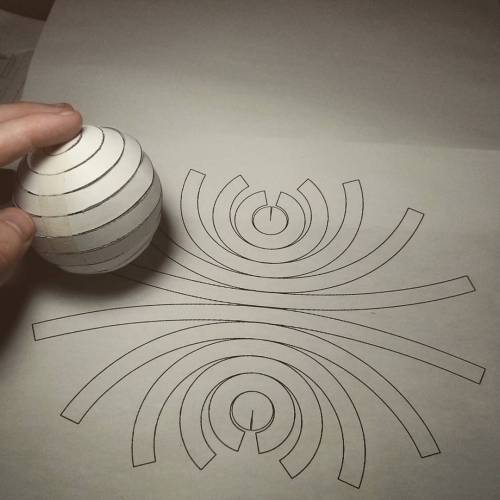
Can you flatten a sphere?
The answer is NO, you can not. This is why all map projections are innacurate and distorted, requiring some form of compromise between how accurate the angles, distances and areas in a globe are represented.
This is all due to Gauss’s Theorema Egregium, which dictates that you can only bend surfaces without distortion/stretching if you don’t change their Gaussian curvature.
The Gaussian curvature is an intrinsic and important property of a surface. Planes, cylinders and cones all have zero Gaussian curvature, and this is why you can make a tube or a party hat out of a flat piece of paper. A sphere has a positive Gaussian curvature, and a saddle shape has a negative one, so you cannot make those starting out with something flat.
If you like pizza then you are probably intimately familiar with this theorem. That universal trick of bending a pizza slice so it stiffens up is a direct result of the theorem, as the bend forces the other direction to stay flat as to maintain zero Gaussian curvature on the slice. Here’s a Numberphile video explaining it in more detail.
However, there are several ways to approximate a sphere as a collection of shapes you can flatten. For instance, you can project the surface of the sphere onto an icosahedron, a solid with 20 equal triangular faces, giving you what it is called the Dymaxion projection.
The Dymaxion map projection.
The problem with this technique is that you still have a sphere approximated by flat shapes, and not curved ones.
One of the earliest proofs of the surface area of the sphere (4πr2) came from the great Greek mathematician Archimedes. He realized that he could approximate the surface of the sphere arbitrarily close by stacks of truncated cones. The animation below shows this construction.
The great thing about cones is that not only they are curved surfaces, they also have zero curvature! This means we can flatten each of those conical strips onto a flat sheet of paper, which will then be a good approximation of a sphere.
So what does this flattened sphere approximated by conical strips look like? Check the image below.
But this is not the only way to distribute the strips. We could also align them by a corner, like this:
All of this is not exactly new, of course, but I never saw anyone assembling one of these. I wanted to try it out with paper, and that photo above is the result.
It’s really hard to put together and it doesn’t hold itself up too well, but it’s a nice little reminder that math works after all!
Here’s the PDF to print it out, if you want to try it yourself. Send me a picture if you do!
More Posts from Hannahhaifisch and Others
Is dark energy an illusion?
Variations in universe’s density can explain away dark energy, theorists claim from Latest News from Science Magazine http://ift.tt/2nx2XYs via IFTTT

“The earth as seen from the moon.” The young astronomer; or, Helps to a knowledge of the leading constellations. 1891.

Chalcedony - Mamuju Area, Sulawesi Barat Province, Sulawesi Island, Indonesia

0086

Hexagons and rhombis spreading out
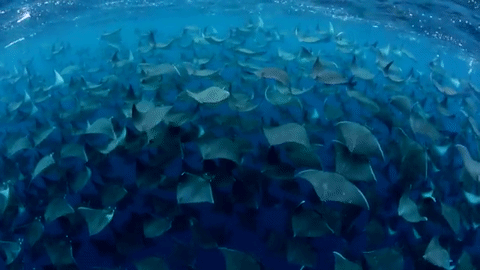



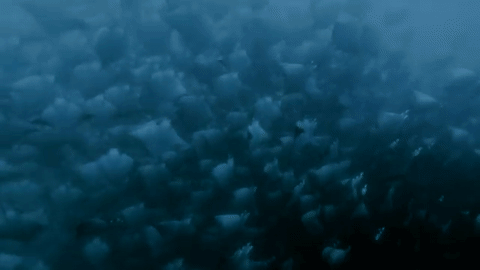

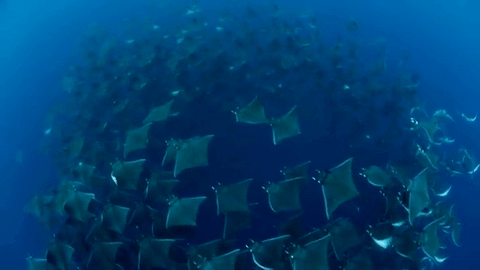

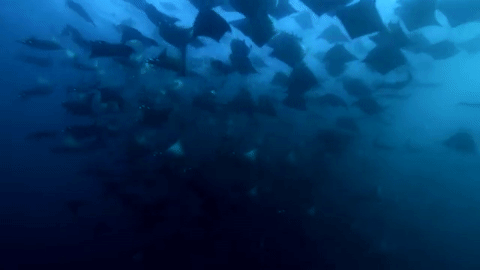
closely related to sharks but with long, flat bodies and wing-like pectoral fins, mobula rays are ideally suited to swooping through the water - here off the gulf of california - yet seem equally at home in the air, so much so that they have earned the name “flying rays”. mobula rays can reach heights of more than two metres, remaining airborne for several seconds.
mobula rays are quite elusive and difficult to study, so biologists are not quite sure why they jump out of the water. theories vary from a means of communication, to a mating ritual (though both males and females jump), or as a way to shed themselves of parasites. they could also be jumping as a way of better corralling their pray, as seen with them swimming in a circular formation.
what is known about mobula rays is that they reach sexual maturity late and their investment in their offspring is more akin to mammals than other fishes, usually producing just a single pup after long pregnancies, all of which makes them extremely vulnerable to commercial fishing, especially as a species that likes to come together in large groups.


Spinbox by Dave Whyte | Tumblr







Cindermedusae - making generative creatures

David Spriggs, Dark Matter.
-
 j0zie liked this · 2 months ago
j0zie liked this · 2 months ago -
 beckettbeforemidnight liked this · 2 months ago
beckettbeforemidnight liked this · 2 months ago -
 adequate-images reblogged this · 2 months ago
adequate-images reblogged this · 2 months ago -
 void-of-the-valley liked this · 2 months ago
void-of-the-valley liked this · 2 months ago -
 flying-for-freedom liked this · 3 months ago
flying-for-freedom liked this · 3 months ago -
 dataisgold reblogged this · 3 months ago
dataisgold reblogged this · 3 months ago -
 dataisgold liked this · 3 months ago
dataisgold liked this · 3 months ago -
 beachchairbookworm liked this · 6 months ago
beachchairbookworm liked this · 6 months ago -
 aliaaafify reblogged this · 7 months ago
aliaaafify reblogged this · 7 months ago -
 aliaaafify liked this · 7 months ago
aliaaafify liked this · 7 months ago -
 yourbuddyjasyhui liked this · 9 months ago
yourbuddyjasyhui liked this · 9 months ago -
 itsjonhyjay liked this · 10 months ago
itsjonhyjay liked this · 10 months ago -
 crewhst liked this · 10 months ago
crewhst liked this · 10 months ago -
 freakingnerdblog reblogged this · 1 year ago
freakingnerdblog reblogged this · 1 year ago -
 infinityflesh00 liked this · 1 year ago
infinityflesh00 liked this · 1 year ago -
 bananaede reblogged this · 1 year ago
bananaede reblogged this · 1 year ago -
 bananaede liked this · 1 year ago
bananaede liked this · 1 year ago -
 ddenzo reblogged this · 1 year ago
ddenzo reblogged this · 1 year ago -
 ddenzo liked this · 1 year ago
ddenzo liked this · 1 year ago -
 exjz reblogged this · 1 year ago
exjz reblogged this · 1 year ago -
 lyiadia liked this · 1 year ago
lyiadia liked this · 1 year ago -
 mexrican liked this · 1 year ago
mexrican liked this · 1 year ago -
 diminirita liked this · 1 year ago
diminirita liked this · 1 year ago -
 kingsigenchildra liked this · 1 year ago
kingsigenchildra liked this · 1 year ago -
 mike1universe liked this · 1 year ago
mike1universe liked this · 1 year ago -
 karennesmith reblogged this · 1 year ago
karennesmith reblogged this · 1 year ago -
 karennesmith liked this · 1 year ago
karennesmith liked this · 1 year ago -
 not-kashy liked this · 1 year ago
not-kashy liked this · 1 year ago -
 bratjedi0 liked this · 1 year ago
bratjedi0 liked this · 1 year ago -
 kirby5087 liked this · 1 year ago
kirby5087 liked this · 1 year ago -
 no1heartbreaker reblogged this · 1 year ago
no1heartbreaker reblogged this · 1 year ago -
 rodob777 liked this · 1 year ago
rodob777 liked this · 1 year ago -
 pablilloelpillo liked this · 1 year ago
pablilloelpillo liked this · 1 year ago